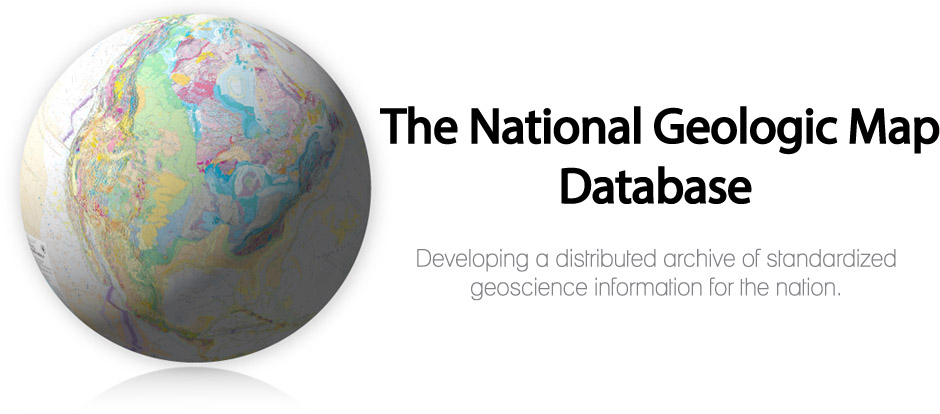Geologist
National Cooperative Geologic Mapping Program
Email:
drsoller@usgs.gov
Office Phone:
703-648-6907
Fax:
703-648-6977
Location
John W Powell FB
12201 Sunrise Valley Drive
Reston
, VA
20192-0002
US
Supervisor:
Christopher Swezey
|

A digital representation of a glacial aquifer map for the northeastern United States (Kontis and others, 2004; http://pubs.er.usgs.gov/publication/pp1415C; Plate 3) has been prepared by staff of the U.S. Geological Survey. Aquifer data was digitally compiled from a georeferenced version of Plate 3, along with supplemental aquifer maps that covered portions of the northeast.
|

The National Geologic Map Database (NGMDB) is a Congressionally mandated national archive of geoscience maps, reports, and stratigraphic information. The Geologic Mapping Act of 1992 and its Reauthorizations calls for the U.S. Geological Survey and the Association of American State Geologists (AASG) to cooperatively build this national archive, according to technical and scientific standards whose development is coordinated by the NGMDB. The NGMDB consists of a comprehensive set of publication citations, stratigraphic nomenclature, downloadable content in raster and vector formats, unpublished source information, and guidance on standards development. The NGMDB contains information on more than 110,000 maps and...
Tags: AASG,
Aeromagnetics,
Association of American State Geologists,
Bedrock geology,
CSS, All tags...
Coal,
Coastal and marine geology,
Core Science Systems,
Earthquakes,
Environmental hazards,
Environmental resources,
GIS,
Geochemistry,
Geochronology,
Geologic map,
Geology,
Geophysics,
Geothermal resources,
Gravity,
Hazards,
Landslides,
Metallic resources,
NCGMP,
NGDA,
NGDA Geology Theme,
NGDAID52,
NGMDB,
National Cooperative Geologic Mapping Program,
National Geologic Map Database,
National Geospatial Data Asset,
Non-metallic resources,
North America,
Oil and gas,
Paleontology,
Petroleum,
Radioactivity,
Resources,
Stratigraphic nomenclature,
Stratigraphy,
Surficial geology,
U.S.,
U.S. Geological Survey,
US,
USGS,
USGS Science Data Catalog (SDC),
USGS:366411b4-98bc-41f7-876b-778f91aff6b6,
United States,
Volcanoes,
WMS,
Water resources,
Web-mapping,
geoscientificInformation,
image service,
mapview, Fewer tags
|

The Glacial Environments and Surficial Sediments geodatabase (GESS) data includes a polygon file with multiple attributes which describe the lithology, geomorphology, and related depositional environment of Quaternary-age surfical sediments in the glaciated conterminous United States. These attributes include: the map unit (GESS_MU), a geomorphic modifier (GESS_Modifier), a sediment stratification indicator (SedStrat), and a a sediment texture classification (Texture6). Possible GESS_MU values include: alluvial sediment, colluvial sediment, eolian sediment, lacustrine sediment, marine sediment, organic sediment, outwash, ice-contact deposits, island, residual soils, soliflucted sediment, till, bedrock, fill, and...
Tags: confined and unconfined aquifers,
geoscientificInformation,
glaciated United States,
glaciology,
hydrogeologic framework, All tags...
hydrogeologic terranes,
hydrogeology,
surficial geologic maps,
surficial sediments,
water use, Fewer tags
|

The bedrock geology for the Glacial Environments and Surficial Sediments (GESS) geodatabase is an amalgamation of several “Integrated Geologic Map Databases for the United States” (Dicken and others, 2008; Ludington and others, 2007; Nicholson and others, 2007-1,-2,-3; Stoeser and others, 2007). Using the LITH62 and LITH62MINO attribute values from that series of maps and the associated lithclass 6.2 code text descriptions from the geodatabase, spatial elements of that geodatabase were grouped. A new GESS attribute was created, “Litho_class,” and each spatial element was given a Litho_class value of non-carbonate sedimentary rock, carbonate rock, non-carbonate metamorphic rock, volcanic rock, plutonic rock, or unconsolidataed...
Tags: Connecticut,
Idaho,
Illinois,
Indiana,
Iowa, All tags...
Kansas,
Maine,
Massachusetts,
Michigan,
Minnesota,
Missouri,
Montana,
NAWQA,
Nebraska,
New Hampshire,
New Jersey,
New York,
North Dakota,
Ohio,
Pennsylvania,
Rhode Island,
South Dakota,
Vermont,
Washington,
Wisconsin,
bedrock geologic units,
carbonate rock,
geological maps,
geoscientificInformation,
glaciated United States,
hydrogeologic framework,
hydrogeology, Fewer tags
|

The Hydrogeologic Terranes dataset includes separate polygon and line feature classes. The polygon feature class divides the glaciated United States into seventeen distinct terranes using a geologically based approach. Each terrane contains Quaternary sediment that is derived from a common depositional history and can be characterized by texture and thickness. Delineation of hydrogeologic terranes was based on an interpretation of existing geologic mapping of surficial and Quaternary deposits, and thickness of unconsolidated material. Overall thickness of Quaternary sediment was used to qualitatively rank the generalized complexity of geologic framework in each terrane: "lower" complexity (assigned a terrane code...
Tags: confined and unconfined aquifers,
geoscientificInformation,
glaciated United States,
glaciology,
hydrogeologic framework, All tags...
hydrogeologic terranes,
hydrogeology,
surficial geologic maps,
surficial sediments,
water use, Fewer tags
|
View more...
|